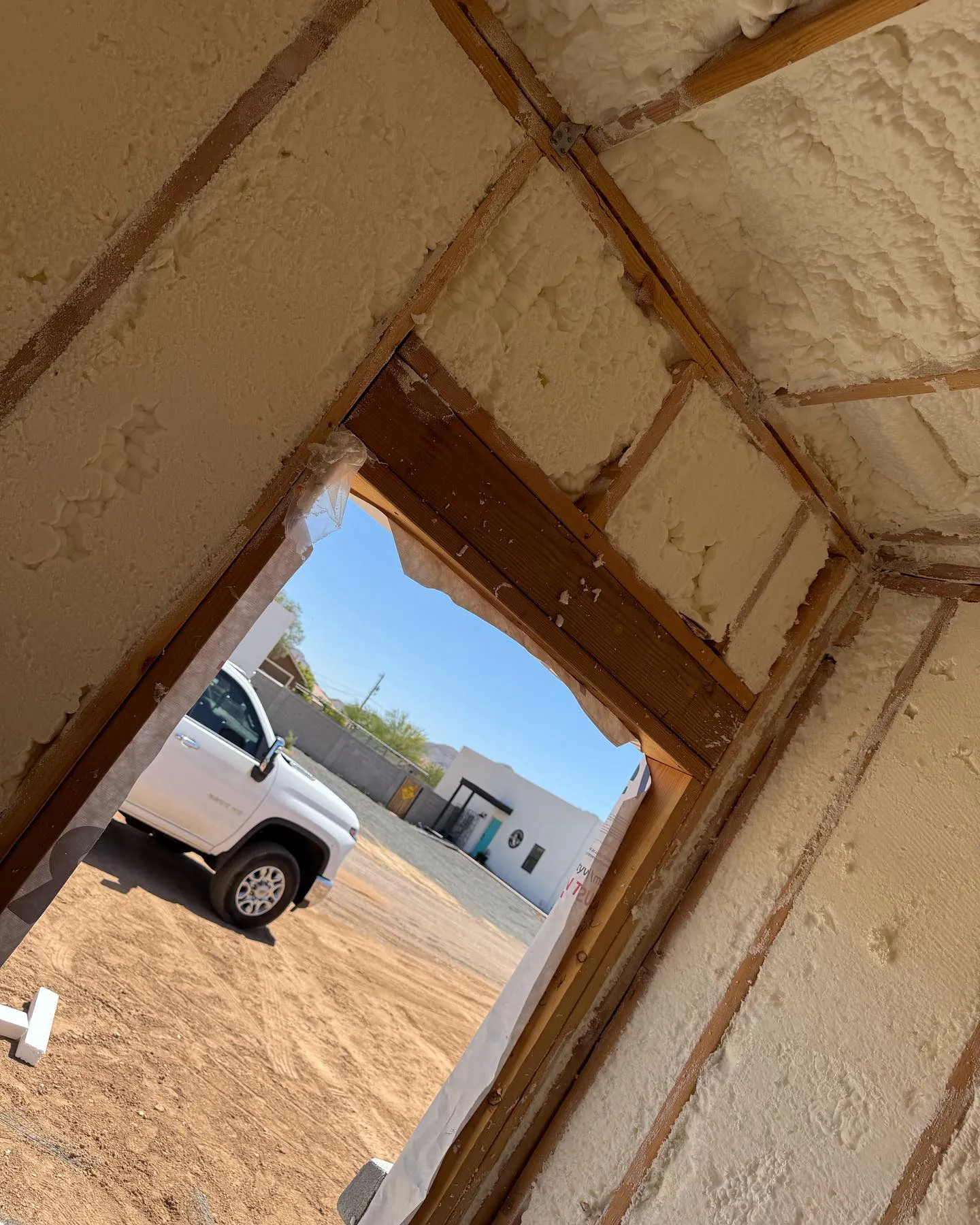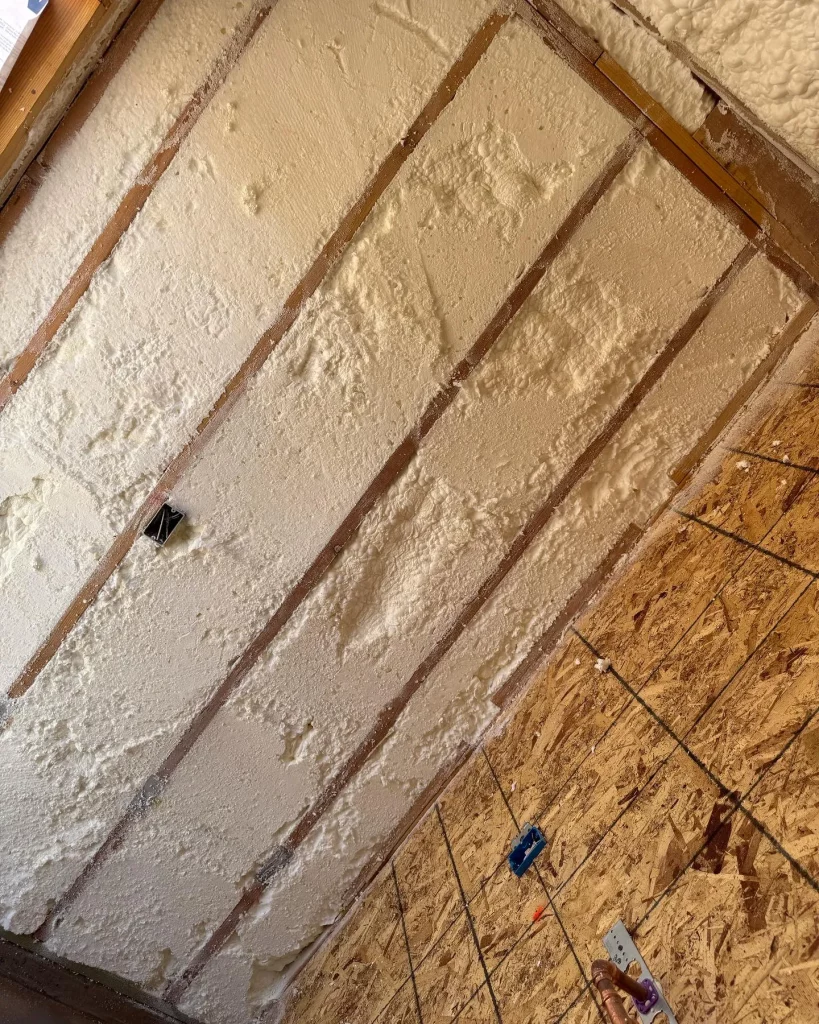
Spray foam insulation reduces energy consumption, lowers greenhouse gas emissions, and improves air quality inside buildings. In Phoenix, AZ, where temperatures regularly exceed 100°F in summer, effective insulation significantly reduces the strain on cooling systems. This leads to fewer carbon emissions and reduced fossil fuel dependence. Spray foam’s airtight seal prevents conditioned air from escaping, resulting in consistent indoor temperatures and energy efficiency year-round.
All Valley Insulation LLC has firsthand experience installing spray foam insulation across residential and commercial properties in the Phoenix area. The results consistently show improved energy performance and reduced HVAC usage, validating its environmental and operational impact in this climate.
Phoenix’s desert climate demands insulation that can withstand extreme heat while controlling air movement. Spray foam performs better than traditional insulation materials by forming an airtight barrier that resists heat transfer, air leakage, and moisture infiltration.
| Insulation Type | Air Sealing Effectiveness | R-Value per Inch | VOC Emissions Post-Cure | Durability in High Heat | Moisture Resistance |
|---|---|---|---|---|---|
| Closed Cell Spray Foam | Excellent | 6.0 – 7.0 | Minimal | High | High |
| Open Cell Spray Foam | Very Good | 3.5 – 3.7 | Minimal | Moderate | Moderate |
| Fiberglass Batts | Low | 2.9 – 3.8 | None | Moderate | Low |
| Cellulose | Moderate | 3.2 – 3.8 | Low | Moderate | Moderate |
Bonus Tip: In Phoenix, closed cell foam is often preferred for unvented attics and metal structures due to its thermal and moisture-resistant properties.
| Specification | Closed Cell Foam | Open Cell Foam |
|---|---|---|
| R-Value per Inch | 6.0 – 7.0 | 3.5 – 3.7 |
| Expansion Rate | 30x | 100x |
| Vapor Permeability | <1 perm (Low) | >10 perms (High) |
| Structural Rigidity | Adds structural support | Does not add rigidity |
| Sound Dampening | Moderate | High |
| Application Areas | Attics, walls, crawlspaces | Walls, ceilings, interiors |
According to the U.S. Department of Energy, buildings account for 40% of total energy use. Homes insulated with spray foam use up to 50% less energy for heating and cooling compared to those using conventional materials (DOE, 2023). In Phoenix, this translates to measurable savings and a reduced carbon footprint, especially in summer months when cooling systems operate continuously.
A study by the Spray Polyurethane Foam Alliance found that over a 50-year lifecycle, the energy savings from spray foam insulation outweigh the environmental impact of its production by more than 50:1 (SPFA, 2022).
Bonus Tip: In Phoenix, insulating the roof deck with closed cell foam often results in 20-30% lower attic temperatures, directly improving HVAC system longevity and efficiency.

Both open and closed cell spray foam can last 30+ years in Phoenix heat if installed properly.
Yes. By stabilizing internal temperatures, HVAC systems run less frequently and last longer.
Yes. Once cured, spray foam emits no VOCs or airborne chemicals and is safe for indoor use.
Usually, yes. Removing outdated material allows full surface coverage and better foam adhesion.
Spray foam insulation in Phoenix, AZ supports energy conservation, indoor comfort, and emission reduction. In Phoenix, where thermal loads are high and seasonal temperature differences are sharp, it offers both immediate and long-term benefits. Closed cell and open cell variants meet different structural and climate-related needs, especially when applied with building-specific analysis.
For residential and commercial insulation solutions in Phoenix, contact All Valley Insulation LLC. Email [email protected] or call (602) 761-0367 for more information on which spray foam type fits your structure and environmental goals.
Spray foam reduces dust and pollen intrusion. Proper ventilation maintains air quality in sealed homes.
Closed cell foam remains dimensionally stable in extreme temperatures. It resists shrinkage and maintains integrity.
Energy efficiency improvements often contribute to higher appraisal values, especially in Phoenix’s competitive housing market.
Annual HVAC checks and monitoring indoor humidity are sufficient. No direct insulation maintenance required.
Proper installation with professional-grade ventilation mitigates temporary off-gassing. Post-cure, environmental impact is minimal.